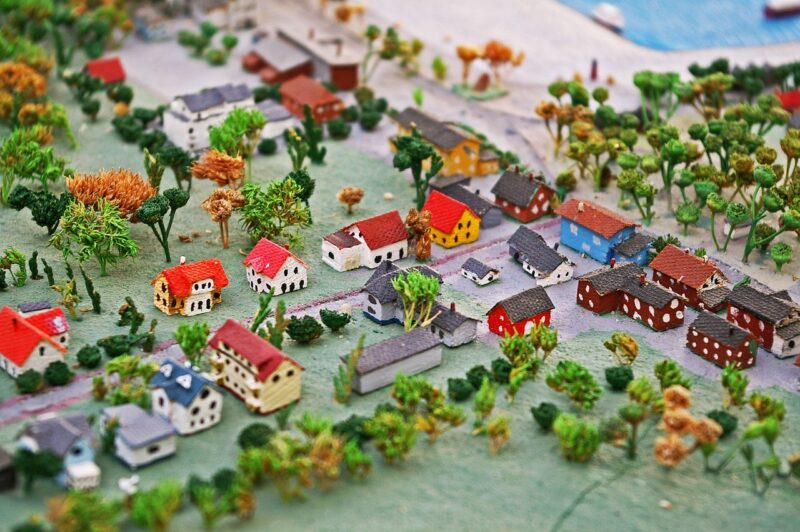Exploring the World of Miniature Model Painting: A Guide for Hobbyists
November 14, 2024

Miniature model painting is more than just a hobby; it’s an art form that allows individuals to express their creativity, patience, and attention to detail. From tabletop games to collectible figurines, miniature models have captivated enthusiasts for decades. This guide will delve into the essentials of miniature model painting, providing tips, techniques, and insights to help both beginners and seasoned hobbyists alike become better artists in their craft.
1. The Allure of Miniature Model Painting
The miniature painting hobby has grown significantly in popularity due to its accessibility and the satisfaction that comes from seeing a piece transform from a plain model to a personalized work of art. There are several reasons why people are drawn to this hobby:
- Creativity: Painting miniatures provides an outlet for artistic expression, allowing painters to choose colors, styles, and techniques.
- Relaxation: Many hobbyists find the process meditative, helping to reduce stress and improve focus.
- Community: The miniature painting community is vibrant, with forums, conventions, and events that allow for sharing techniques and inspiration.
- Satisfaction: Completing a miniature can be incredibly rewarding, bringing a sense of accomplishment and pride.
2. Essential Tools and Materials
Before diving into painting, you’ll need to gather essential tools and materials.
- Miniatures: Choose the models you wish to paint. Popular options include Warhammer figures, board game pieces, and historical miniatures.
- Paints: Acrylic paints are commonly used due to their quick drying time and ease of use. Brands like Citadel, Vallejo, and Scale75 offer a wide variety of colors specifically formulated for miniatures.
- Brushes: Invest in a range of quality brushes, including fine detail brushes, flat brushes, and larger brushes for basecoating.
- Palette: Use a wet palette or mixing tray to keep your paints moist and workable.
- Primers: A good primer helps paint adhere better to the surface of your miniature. Choose a spray primer or brush-on primer based on your preference.
- Sealers: After painting, seal your miniatures with a clear coat to protect them from wear and tear.
3. Preparing Your Miniature for Painting
Preparation is key to achieving great results. Follow these steps to prepare your miniature:
- Cleaning: Remove any mold release agents by rinsing miniatures in warm soapy water. This ensures better paint adhesion.
- Assembly: Assemble your model if necessary, using super glue or plastic cement.
- Priming: Apply a thin layer of primer to your model. Priming helps to enhance color vibrancy and layer adhesion.
4. Painting Techniques to Master
Once your miniature is prepared, it’s time to start painting. Here are some essential techniques:
- Basecoating: Start by applying a base color to your entire model. Thin your paints with water or medium to prevent clumping.
- Washing: Apply a wash (thinned dark paint) over the model to enhance details and create shadows. This step brings depth and realism to your work.
- Drybrushing: Use a dry brush with a little paint on it to lightly brush over raised areas, highlighting details and adding texture.
- Layering: Build up colors gradually by layering thin coats of paint. This technique is great for blending and depth.
- Blending: For a smooth transition between colors, use wet blending or glaze techniques to mix paints on the model.
5. Creative Finishing Touches
To make your miniatures stand out, consider incorporating special techniques and details:
- Basing: Create unique bases using sand, stones, grass, or other materials to add context to your miniatures.
- Oils and Enamels: Explore oil paints or enamel washes for smooth transitions and rich textures.
- Freehand Painting: Challenge yourself by adding freehand designs or symbols to your miniatures for a personal touch.
6. Learning and Improving Your Skills
Miniature model painting is a skill that evolves over time. Here are ways to continue improving:
- Practice Regularly: Set aside time for regular painting sessions to develop your skills.
- Seek Feedback: Join online forums, social media groups, or local clubs to share your work and seek constructive criticism.
- Watch Tutorials: Many talented artists share their techniques online through videos and blog posts. Utilize these resources to learn new methods.
- Attend Workshops and Conventions: Participate in painting workshops or conventions to meet experts and other hobbyists, and gain insights into advanced techniques.
Conclusion
Miniature model painting can be a deeply rewarding experience. With the right tools, techniques, and a bit of practice, anyone can turn a simple model into a stunning piece of art. Through creativity, patience, and a willingness to learn, you’ll discover a fulfilling hobby that can be shared with others. So gather your supplies, find a quiet space, and start your journey into the colorful world of miniature painting. Happy painting!







